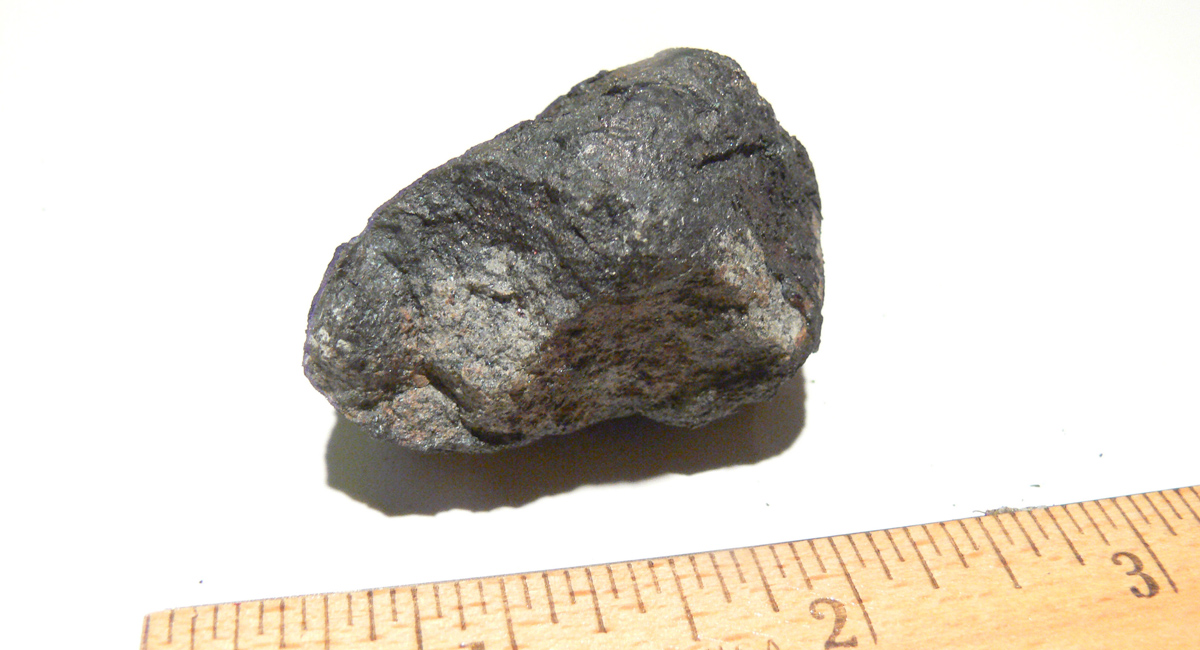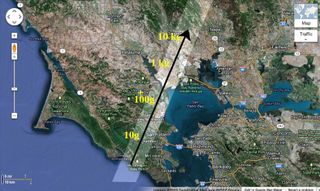Meteorite From California Fireball Is Meteor-wrong, Scientist Says

A rock thought to be a meteorite from a recent fireball seen over Northern California is in fact, just a regular Earth rock, scientists report.
The stone had excited researchers, as it seemed to present the first specimen deposited by a meteor that lit up the night sky over the San Francisco Bay Area on Oct. 17. Novato, Calif. resident Lisa Webber, a nurse at the University of California, San Francisco Medical Center, read about the fireball and recalled hearing a sound on her roof that night. Sure enough, she and neighbors found a ding on the roof and a likely-looking rock in her backyard.
Peter Jenniskens, head of the CAMS (Cameras for Allsky Meteor Surveillance) project, which is jointly run by NASA and the SETI (Search for Extraterrestrial Intelligence) Institute, came to investigate, and thought the 2.2 ounce (63 grams) rock was a meteorite, based on its apparent density and response to a magnet. However, follow-up analysis under a microscope revealed that the "meteorite" was a meteorwrong.
"I sincerely thought it was, based on what appeared to me was remnant fusion crust," Jenniskens wrote in a statement on the CAMS site. "On closer inspection, that crust was a product of weathering of a natural rock, not from the heat of entry."

Examination of the rock under a petrographic microscope quickly revealed the stone was not a meteorite, Jenniskens said. Still, the ding on Webber's roof, along with her recollection of the sound she heard that night, suggest her house may in fact have been hit by a still-missing meteorite.
"Today, I apologized to Lisa Webber and together we searched the area around the house in the hope of finding the elusive rock that hit the roof, but no luck, so far."
Scientists have not given up hope of finding a meteorite from the fall that created the Oct. 17 night sky display. They believe the space rock traveled through Earth's atmosphere from east of San Rafael and continued over west Novato, toward Sonoma.
Get the Space.com Newsletter
Breaking space news, the latest updates on rocket launches, skywatching events and more!
The fireball occurred at 7:44:29 p.m. PDT (10:44 p.m. EDT), and was captured in cell phone videos and photos. However, material from the fall remains elusive.
Editor's Note: If you snapped a photo of the Oct. 17 meteor and would like to share it with SPACE.com, please send images, comments and your location info to managing Editor Tariq Malik at: tmalik@space.com.
Follow Clara Moskowitz on Twitter @ClaraMoskowitz or SPACE.com @Spacedotcom. We're also on Facebook & Google+.
Join our Space Forums to keep talking space on the latest missions, night sky and more! And if you have a news tip, correction or comment, let us know at: community@space.com.

Clara Moskowitz is a science and space writer who joined the Space.com team in 2008 and served as Assistant Managing Editor from 2011 to 2013. Clara has a bachelor's degree in astronomy and physics from Wesleyan University, and a graduate certificate in science writing from the University of California, Santa Cruz. She covers everything from astronomy to human spaceflight and once aced a NASTAR suborbital spaceflight training program for space missions. Clara is currently Associate Editor of Scientific American. To see her latest project is, follow Clara on Twitter.